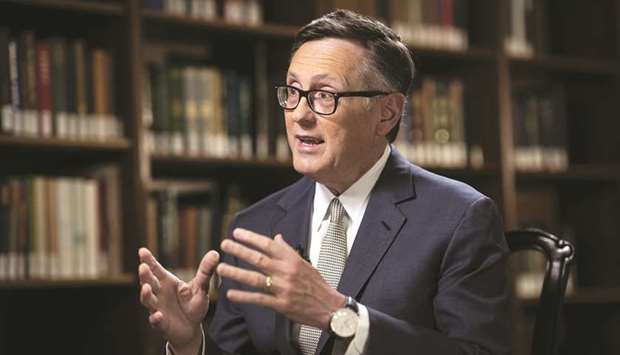US Federal Reserve officials were divided yesterday over how seriously to treat a slide in inflation, with one top policymaker saying the Fed was “close” to its inflation target and three others warning the weak price increases posed major risks the Fed may need to attack with lower interest rates.
Just how deep that division is and where in the debate the most influential policymakers have staked their ground is going to grip the financial world between now and conclusion of the Fed’s next meeting on July 31.
Interest rate futures markets currently see a 100% probability of a rate cut then, with the only debate in trading circles over whether the cut will 25 basis points or twice that.
Policymakers’ rate projections issued on Wednesday showed a near clean break at the Fed.
Roughly half of officials see no rate reduction as likely appropriate this year, and roughly half see a cut of up to half a percentage point as probably warranted.
That division took shape yesterday, in the first hours after the central bank’s formal “blackout” lifted for commenting on the results of the last two-day policy session, which concluded Wednesday with the Fed leaving rates on hold in a range between 2.25 and 2.5%.
“The economy’s baseline outlook is good — sustained growth, a strong labour market and inflation near our objective,” Fed vice chairman Richard Clarida said yesterday in an interview with Bloomberg Television.
Clarida said there was “broad agreement” that the case for rate increases had grown stronger in recent weeks.
He also said the Fed was ready to act “as appropriate,” a phrase emphasised by chairman Jerome Powell earlier this month as markets slid over broad global growth and trade concerns.
But Clarida’s description of the current 1.5% inflation rate expected this year as “close” to the Fed’s 2% target was in contrast to the views of other policymakers, including Lael Brainard, his colleague on the board of governors and the only other Fed board member with a doctorate in economics. “Recent indicators of inflation and inflation expectations have been disappointing,” Brainard said yesterday in prepared remarks to a Fed conference in Ohio.
With rates so low by historic standards, “basic principles of risk management...would argue for softening the expected path of policy when risks shift to the downside.”
While one of the Fed’s mandates from Congress is for “stable prices,” central bankers globally feel that a bit of inflation is healthy.
Allowing wages and prices to rise steadily would give them room to keep interest rates above zero and, therefore, have room to counter a downturn with rates cuts alone. The threat of inflation drifting downward is twofold.
Waiting too long to counter it means more aggressive Fed action could be required.
In an era when the benchmark policy rate is already so low, that could mean again hitting the zero lower bound and forcing the politically difficult decision to ramp up “unconventional” policy tools like bond-buying once again.
Brainard also sketched out the threat of a sort of self-reinforcing spiral that could take hold if the Fed does not lift inflation higher, with weakened expectations dragging down actual inflation, and leaving the central bank perennially stuck near zero.
In a sharp broadside against the Fed’s decision last week to hold interest rates steady, Minneapolis Federal Reserve bank president Neel Kashkari said the economy needed shock therapy to push inflation and inflation expectations higher, and convince the public the Fed is serious about its 2% inflation goal.
It is a target that has not been consistently met since it was formally adopted in 2012, and Kashkari said he is concerned the public and investors have absorbed the wrong message.
Though he is currently not a voter on the Fed’s rate-setting panel, he called for the Fed to slash rates by half a percentage point now, and commit to not raising them until inflation durably moves to the central bank’s 2% target.
The Fed “should take strong action to re-anchor inflation expectations at our 2% target and support strong job growth, higher wage growth, and sustained economic expansion,” said Kashkari, who has consistently opposed recent rate hikes.
St. Louis Federal Reserve bank president James Bullard, meanwhile, a current voter on rate policy, explained his dissent at the recent meeting as largely a response to the weakening pace of price increases.
“Inflation measures have declined substantially since the end of last year and are presently running some 40 to 50 basis points below the FOMC’s 2% inflation target,” Bullard said in a prepared statement. “The forces that are keeping inflation below target seem unlikely to be solely transitory...Lowering the target range for the federal funds rate at this time would provide insurance against further declines.”

Richard Clarida, vice chairman of the US Federal Reserve, speaks during a Bloomberg Television interview in Washington, DC, yesterday. Clarida’s description of the current 1.5% inflation rate expected this year as u201ccloseu201d to the Fed’s 2% target was in contrast to the views of other policymakers, including Lael Brainard, his colleague on the board of governors.


